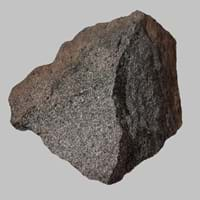Definition
Websterite is ultramafic and ultrabasic rock that consists of roughly equal proportions of orthopyroxene and clinopyroxene. It is a special type of pyroxenite.
Marl is an unconsolidated sedimentary rock consisting of clay and lime
Origin
Webster, North Carolina
Unknown
Discoverer
Unknown
Unknown
Etymology
From the town of Webster located in North Carolina
From Old French marle, from Late Latin marglia
Class
Igneous Rocks
Sedimentary Rocks
Sub-Class
Durable Rock, Hard Rock
Durable Rock, Soft Rock
Group
Plutonic
Not Applicable
Other Categories
Coarse Grained Rock, Opaque Rock
Fine Grained Rock, Opaque Rock
Texture
Clastic, Granular, Phaneritic, Porphyritic
Earthy
Color
Black to Grey, Bluish - Grey, Dark Greenish - Grey, Green, Light Greenish Grey
Beige, Brown, Green, Grey, White
Durability
Durable
Durable
Appearance
Layered, Banded, Veined and Shiny
Rough and Dull
Interior Uses
Countertops, Decorative Aggregates, Entryways, Floor Tiles, Flooring, Interior Decoration
Decorative Aggregates, Floor Tiles
Exterior Uses
As Building Stone, As Facing Stone, Garden Decoration, Paving Stone
As Building Stone, Roof Tiles
Other Architectural Uses
Curbing
Curbing
Construction Industry
As Dimension Stone, Building houses or walls, Cement Manufacture, Construction Aggregate, for Road Aggregate
Cement Manufacture, Construction Aggregate, for Road Aggregate, Making natural cement, Raw material for the manufacture of mortar
Medical Industry
Not Yet Used
Not Yet Used
Antiquity Uses
Artifacts
Artifacts, Jewellery, Sculpture, Small Figurines
Commercial Uses
Cemetery Markers, Commemorative Tablets, Creating Artwork, Laboratory bench tops, Jewelry, Sea Defence, Tombstones
Creating Artwork, Soil Conditioner
Types
Not Available
Clay Marl ,Blue Marl, Red Marl, High Bank Marl, Shell Layer Marl, Under Shell Layer Marl, Sand Marl, Green Marl, Grey Marl and Clayey Marl
Features
Generally rough to touch, Is one of the oldest rock
Generally rough to touch, Is one of the oldest rock, Splintery, Very fine grained rock
Archaeological Significance
Monuments
Not Yet Used
Not Yet Used
Famous Monuments
Data Not Available
Not Applicable
Sculpture
Not Yet Used
Used
Famous Sculptures
Data Not Available
Data Not Available
Pictographs
Not Used
Used
Petroglyphs
Not Used
Used
Figurines
Not Yet Used
Used
Formation
Websterite can be formed as cumulates in ultramafic intrusions by accumulation of pyroxene crystals at the base of the lava chamber.
Marl forms when very fine-grained clay particles are deposited in water which settles at the bottom of water bodies and are compacted by overlying sediment; the water squeezes out and hence forming Marl rock.
Mineral Content
Amphibole, Augite, Bronzite, Chromite, Diopside, Enstatite, Garnet, Hornblende, Hypersthene, Magnetite, Pyroxene
Calcite, Clay, Dolomite, Gypsum, Micas, Pyrite, Quartz
Compound Content
Aluminium Oxide, CaO, Chromium(III) Oxide, Iron(III) Oxide, Potassium Oxide, MgO, Sodium Oxide, Silicon Dioxide, Sulfur Trioxide
Aluminium Oxide, NaCl, CaO, Iron(III) Oxide, Silicon Dioxide
Types of Metamorphism
Burial Metamorphism, Impact Metamorphism
Not Applicable
Types of Weathering
Biological Weathering, Chemical Weathering, Mechanical Weathering
Biological Weathering, Chemical Weathering
Types of Erosion
Chemical Erosion, Coastal Erosion, Glacier Erosion, Water Erosion, Wind Erosion
Chemical Erosion, Coastal Erosion, Water Erosion, Wind Erosion
Grain Size
Coarse Grained
Very fine-grained
Fracture
Uneven
Conchoidal
Streak
White, Greenish White or Grey
White
Porosity
Less Porous
Highly Porous
Luster
Dull to Vitreous to Submetallic
Dull
Cleavage
Irregular
Not Available
Toughness
Not Available
2.6
Specific Gravity
3.2-3.5
2.2-2.8
Transparency
Opaque
Opaque
Density
3.1-3.6 g/cm3
2.4-2.8 g/cm3
Resistance
Impact Resistant, Pressure Resistant, Wear Resistant
Heat Resistant, Impact Resistant
Deposits in Eastern Continents
Asia
India, Russia
India, Pakistan, Russia
Africa
South Africa
Ethiopia, Kenya, Morocco, South Africa
Europe
Germany, Greece, Italy, Scotland, Turkey
Austria, France, Germany, Greece, Italy, Romania, Scotland, Spain, Switzerland
Others
Greenland
Not Yet Found
Deposits in Western Continents
North America
Canada, USA
USA
South America
Brazil, Colombia, Venezuela
Colombia, Ecuador, Peru
Deposits in Oceania Continent
Australia
New Zealand, Queensland
New South Wales, Victoria, Western Australia
All about Websterite and Marl Properties
Know all about Websterite and Marl properties here. All properties of rocks are important as they define the type of rock and its application. Websterite belongs to Igneous Rocks while Marl belongs to Sedimentary Rocks.Texture of Websterite is Clastic, Granular, Phaneritic, Porphyritic whereas that of Marl is Earthy. Websterite appears Layered, Banded, Veined and Shiny and Marl appears Rough and Dull. The luster of Websterite is dull to vitreous to submetallic while that of Marl is dull. Websterite is available in black to grey, bluish - grey, dark greenish - grey, green, light greenish grey colors whereas Marl is available in beige, brown, green, grey, white colors. The commercial uses of Websterite are cemetery markers, commemorative tablets, creating artwork, laboratory bench tops, jewelry, sea defence, tombstones and that of Marl are creating artwork, soil conditioner.










